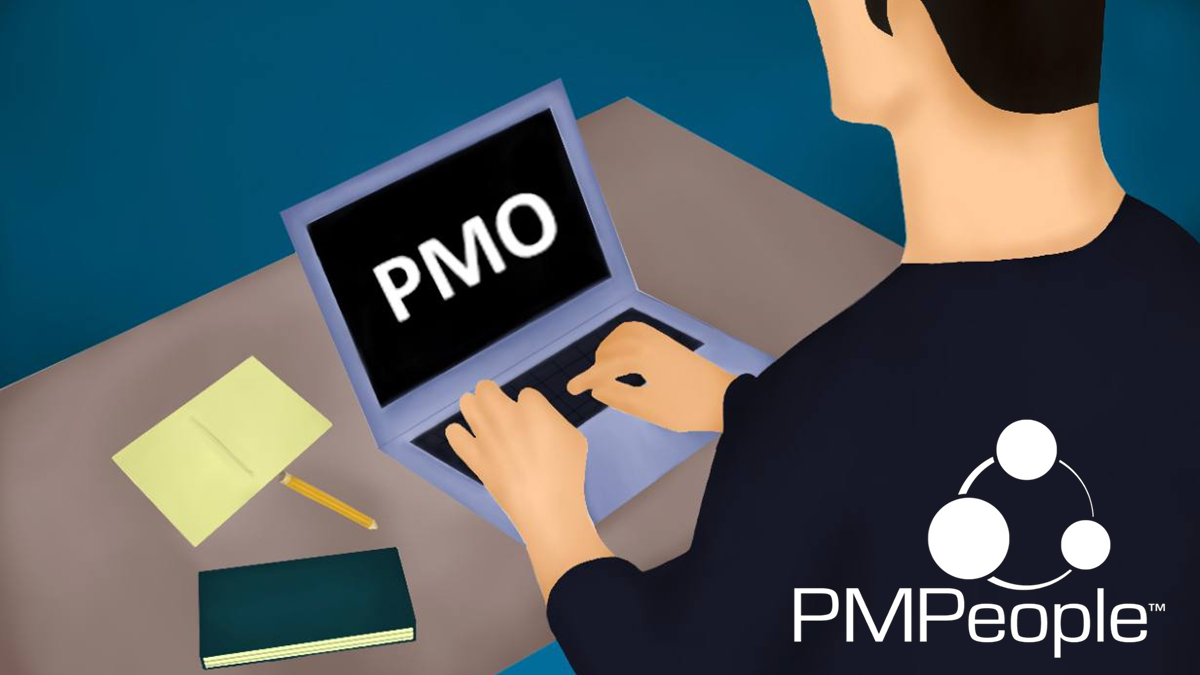Setting up a Project Management Office (PMO) is a complex project itself. Organizations with poor organizational project management are willing to implement PMOs only after they face serious problems like these:
- Key projects are poorly managed and fail unexpectedly. They are closed too late or over budget mainly because of scope creep.
- Top managers are not duly reported on project status. Many managers cannot tell how many projects are still open, which of them are prone to crisis, who is the right person to ask, etc.
- Organizational inability to start new projects. Most resources are busy on current projects, many of them not delivering the expected business value. Hiring new stuff is out of question. The available resources should work more effectively to handle more projects.
Not long time ago, consulting firms included PMO services in their portfolios. They produced process maturity assessment, as-is/to-be/gap analysis, tolling selection, PMO services catalog definition, process workflows, documentation templates, training, etc. PMO function was outsourced to an external fulltime team too, staffed with over 5 consultants. This consulting approach had some issues:
- PMO activation projects were expensive and long duration: Over 6 months from approval until project managers start using the new processes effectively.
- Main project risk is managing change: Modeling process and tools is useless if people do not actually change their way or work. PMO activation projects will fail if team members and middle managers do not follow the new processes and top managers do not get the right data.
- Regarding the PMO operation, the big issue is the high recurring cost on tools and consultants.
Nowadays, many project managers are true organizational change makers: They use project management frameworks in predictive and agile projects and collaborative freemium tools. They focus on business value delivery at each project. Lucky organizations with these professionals on the payroll should expect more and more projects are delivered on time, on cost, with the right quality, delivering the value and the other project management goals achieved.
Many organizations, not so lucky, cannot afford waiting until organizational project management arise bottom up. They need one or more internal PMOs right now. In this fast-paced and technological world, organizations in the project economy cannot wait up to 6 months to improve project management anymore. They need progressive adaptive change: “They need to change a tire while the car is running”.

Nowadays, setting up a PMO is like “changing a tire while the car is running”.
Case Study

Let’s explain how to start a PMO inside a fictional company called ACME, a strong matrix organization mostly executing predictive projects.
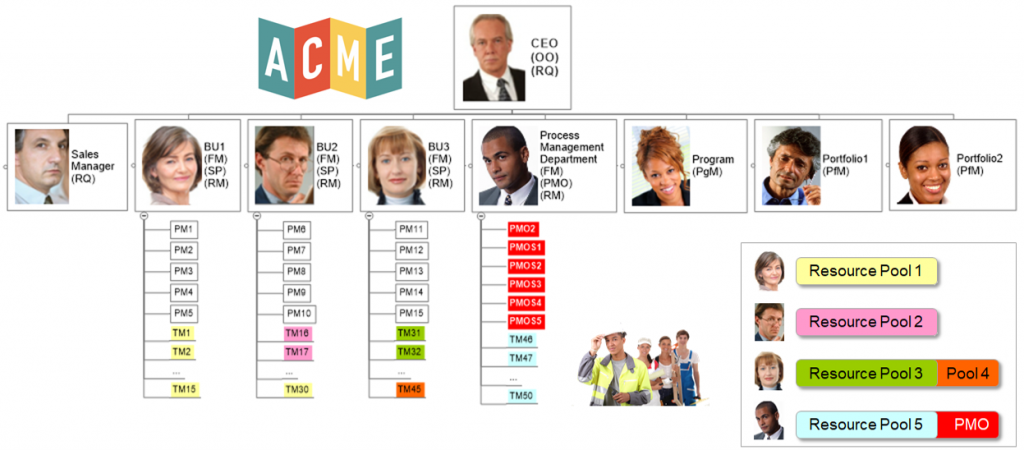
- ACME’s CEO has 3 functional managers below, each of them leading one business unit. Functional managers are the ones who authorize projects inside their respective business units. There are 50 people part time dedicated to projects. These people are grouped into 4 resource pools.
- There is a fourth business unit called the Process Management Department, led by another functional manager. The future PMO, to be formed by 5 people and 2 managers, should belong to this business unit.
- ACME’s CEO is also in sales. He is used to selling projects, along with another full-time sales manager.
- As of today, ACME is executing 20 projects inside the four business units, involving 50 team members.
- There are around 100 stakeholders who need to follow these 20 projects. Some of them work for ACME, most of them come from ACME clients.
- There are 15 project managers fully devoted to managing projects: There are 10 of them managing only 1 project, 5 of them managing 2 projects.
- Project documentation is securely managed in Google Drive. Team members use Asana for day-to-day tasks and Slack for instant messaging. Project managers use the scheduling tool Microsoft Project for planning and tracking Gantt charts.
- Out of the 20 projects, 4 of them are to be managed as a program, led by a program manager.
- ACME has also 2 portfolio managers: One portfolio includes the program above plus another 6 projects. The other portfolio includes 5 projects. Projects inside a portfolio can belong to different business units. There are 5 individual projects that do not belong to any portfolio or program.
The chart below represents how the 20 open projects are included inside the 4 business units, the program and the 2 portfolios:

The Problem
ACME is efficient starting projects, but there are too many crisis and scope creep during execution. Project managers do not produce regular status reports. Day to day work leave no time for planning and controlling.
The program manager has to go too deep inside the 4 projects. Far from being focused on business benefit realization, she imposes a high level of bureaucracy to the 4 project managers, already saturated with day-to-day work.
Portfolio managers demand face to face meetings with project managers as the only way to check the current project status. They complain about the blocking situation: projects in execution are not properly closed, so the portfolio initiatives in the strategic plan are not started as planned.
CEO and sales managers are very frustrated, too: they could sell more projects but there would not be enough resources to execute them.
The Solution
Hiring more project managers or team members is not seen as a good strategy since project load could decrease in the medium term. Outsourcing is also rejected as project knowledge is core business. ACME needs more projects done with the same resources.
The only possible solution seems to be to have a controlling PMO inside the Process Management Department.
The solution consists of setting up an internally staffed PMO.
In PMPeople we have a standardized process to implement a PMO in one week. All the technology can be set up in 1 week so that you can focus on the PMO function. In this short period, now is technically possible to have many people collaborating on project management, using different roles.
PMPeople stands for “people collaborating on project management”. Organizations in the Project Economy can easily go digital with PMPeople. Get your projects professionally managed by people collaborating online using different roles.
Monday

Any PMPeople user can create a new organization, becoming the Organization Owner. When PMO setup project is done, ACME CEO –or any other person with authority to fulfill monthly or annual payments– will be transferred this role.
Organization owner can update organization settings: logos, description, etc.:
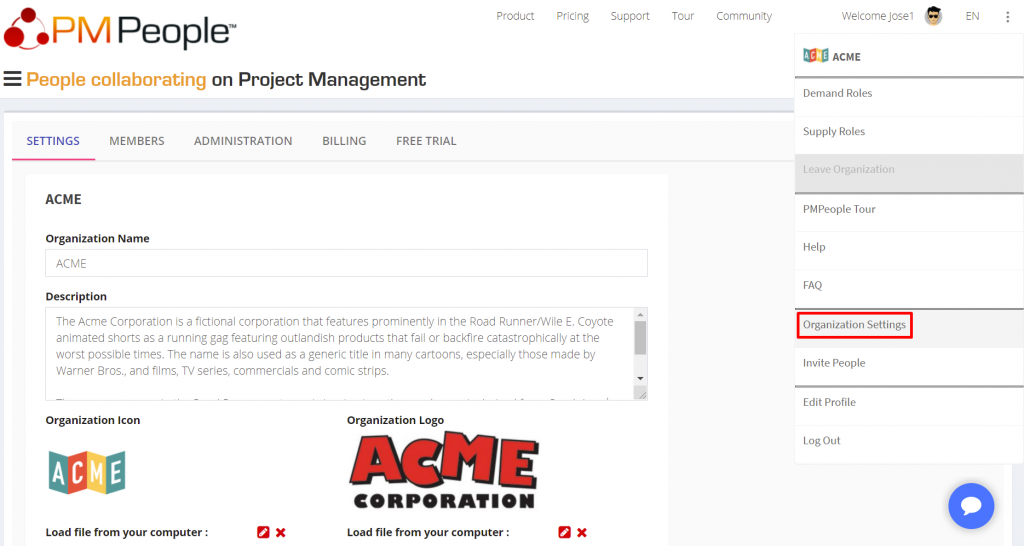
Organization owner could invite the 50 team members and the 30 managers one by one. Better than that, user registration can be optimized uploading an Excel file. Users uploaded that way are registered with a predetermined password –they will change it later– and the role Team Member. In some minutes, the right roles for the 80 users can be set. The group of 100 stakeholders will be uploaded later.
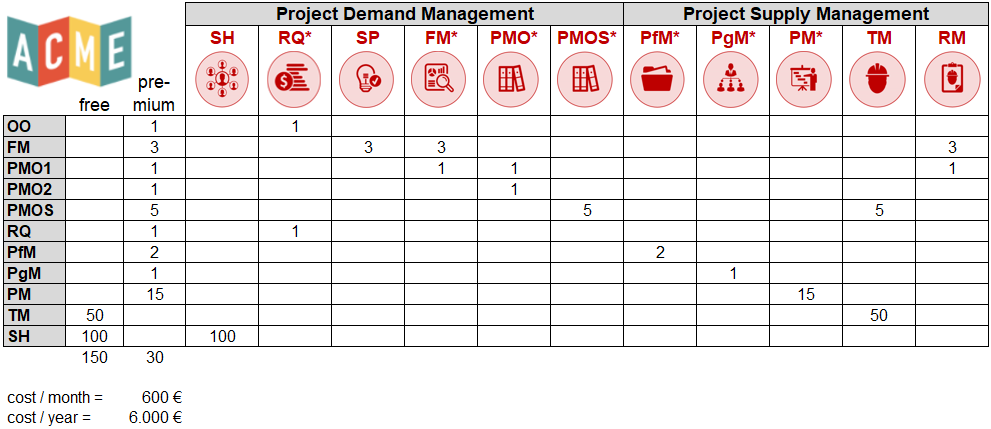
In this moment, organization owner can estimate the cost after the trial period is over. In this case, for 180 users, the tool will cost 600 € a month, or 6,000 € a year. That is 3.33 euro per person per month or 33 euro per person per year.
Before loading projects, we need to create the 4 business units under their functional managers. We can create the 2 portfolios under their portfolio managers, and we can also create the program under the program manager. The portfolio manager can include the program in his portfolio. The program manager can include her program inside the portfolio, alternatively.
This is also the right moment to create the 5 resource pools under their resource managers. Each resource pool can be configured to serve resources to one or many business units. One resource pool can provide resources to many business units. The 50 team members can be included in the 5 resource pools in some minutes.
Project basic data can also be automatically uploaded from an Excel file. Next steps should only take some minutes:
- For each project, assign the role Requester –CEO/sales manager– and the Project Manager.
- For each project, assign the role Project Sponsor. In our case, the sponsor is the Functional Manager.
- For each project, assign the role PM Assistant. One project could have one or many PM Assistants. PMAs will support project managers managing the project.
- Each project can be included in the corresponding portfolio and/or program.
What has changed today?
At the end of the day, people collaborating on ACME projects can check they are able to perform the following functions:

- 80 people can enter PMPeople via web or mobile application. They can change their password, enter ACME organization, check the logo and the organization description. They can notice who is the organization owner, etc.:
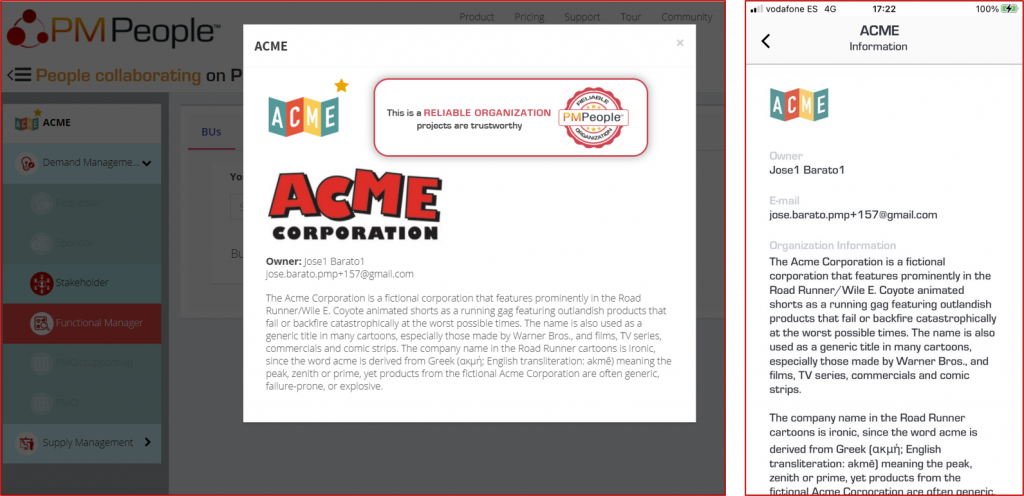
- The 2 people responsible for the PMO can use the PMO role and check they can see all projects, resources, business units and resource pools. They can control any project as if they were the project manager, any portfolio as if they were the portfolio manager, any program as if they were the program manager, any business unit as if they were the functional manager and any resource pool as if they were the resource manager. Notice that, in PMPeople, the PMO role can perform almost all functions inside the organization. PMO cannot do some specific functions exclusive for the organization owner.
- The person in charge of Process Management Department can enter as a PMO and also as a Functional Manager to check business unit data. She can also enter as a Resource Manager to check resource pool data and the data of the 5 team members belonging to the PMO team.
- The CEO and the sales manager can enter as Requesters to check the state of the projects they requested.
- Each business unit manager can enter as Functional Manager, Sponsor and Resource Manager.
- PMO team members can also enter as a PM Assistant to check the state of the projects they support.
- Each Portfolio Manager can check the projects inside their portfolio. One portfolio manager can check the program inside his portfolio, and the projects inside the program.
- The Program Manager can check the projects inside his program.
- The 15 Project Managers can check they have projects in one or two business units. Recall there are 10 project managers with 1 project and 5 project managers with 2 projects. They can enter their projects to create, delete or change any data item. They cannot change the project manager, logically.
- The 5 Resource Managers can change the setup data for their resource pools. They can check their resource pools include the right team members, and other team member details.
- Last, but not least, the 50 Team Members can check they belong to the right resource pool, and other details.
Tuesday

We advise start piloting the PMO with a project in execution analogous in complexity with the rest. In our case, we choose a pilot project inside the program. For the sake of the case study, let’s assume most of the projects in ACME are predictive and a high level of processes and compliance is needed –in agile organizations we should not model processes so much.
First things first, we start deciding several parameters for the business unit (BU) this project belongs to. In principle, these parameters affect only the projects inside this business unit, but chances are they are replicable to the other 3. The Functional Manager can set these Business Unit parameters:
- Calendars set labor days for the projects inside this BU.
- Notification Schemes set automatic emails when some events occur in the projects inside this BU.
- Clients for the projects inside this BU.
- Phases to model lifecycle for the projects inside this BU.
- Tags to filter project lists inside this BU.
- Cost Categories and Payment Methods to be used by team members when reporting expenses at projects inside this BU.
Now the Project Manager (PM) can update some data in the sections for initiation and planning. Let’s start with Initiation:
- In section Project Data, the PM can set the project to allow users join with a private code, meaning that users with the role Stakeholder, PM Assistant or Team Member can join this project proactively, provided they know the project private code.
- In section Project Benefits, the PM can update data on expected ROI after the project is finished and moved to operation.
- In section Project Charter, the PM can update some information to justify the project. In the web, the Project Charter can be downloaded as a PDF file.

- In the mobile application, the PM can update Project Charter data.
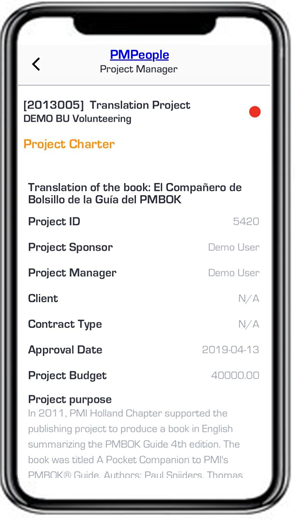
- In section Project Team, users inside this project can meet the extended project team. In this moment, users can see only the managers –team members are not assigned yet.
- In section Stakeholder Register, the PM can add and update stakeholder’s data, one by one. For stakeholders needing to access the project online, this can be done in two ways that can be practiced now. Let’s assume the organization owner has registered the 5 stakeholders who need to access the pilot project. Entering this stakeholder register item, the PM can select the user from the organization’s stakeholder list or invite the stakeholder with the email address. The result is the same in both cases: these users will be able to access the pilot project when they enter the organization using the Stakeholder role. Let’s assume the PM select/invite 3 stakeholders this way. For the other 2, the PM can give them the project private code to make them join the project proactively.
- Finally, the PM can use the initiation section to connect PMPeople with other tools used in the organization for this project. Recall ACME is using Google Drive, Asana and Slack to make people collaborate on projects.
Now the PM is entering the Planning data:
- Let’s assume the pilot project is already planned with Microsoft Project (MSP). If that is the case, planning scope, schedule and cost can be done very quickly. First, the PM make sure that the project baseline is set in MSP. Then, in the Gantt Chart view, the PM can set the field Priority is set with value 1 to indicate which are the work packages and milestones to upload to PMPeople. Use the Notes field to describe each work package or milestone.

- PM can click the button “rebaseline” in PMPeople to load work packages data automatically: names, descriptions, dates, costs, etc.
- PM can manage scope planning entering the project scope statement information, the WBS dictionary, requirements, and deliverables for each work package.
- PM can complete schedule planning by explaining the basis for duration estimates, milestones descriptions, etc.
- PM can complete cost planning by explaining the basis for cost estimates. If ACME is using the EVM method, then he can quickly enter the data for the Budgeted Cost of Work Scheduled –a.k.a. Planned Value. The PM has previously planned the review dates.
- PM can complete the funding planning entering amounts, dates and explanations for incomes, expenses, reserves, and costs. Managers can check the project margin graphically.

- PM can plan resources assigning the team members to work packages.
- PM can plan tasks inside work packages. In this case, PM can import the tasks from Asana.
What has changed today?
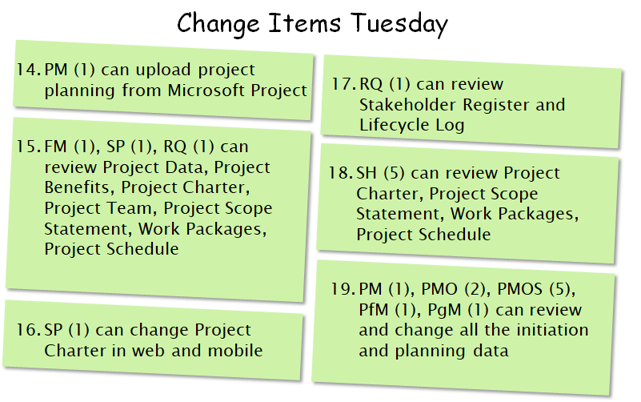
Wednesday

Now is the right time to engage the most important people in any PMO activation project. That is, the Team Members. Let’s assume the pilot project has 5 team members assigned to work packages and tasks:
- Team members can review their assignments only after the PM moves the project to “execution” state. If the project is in other state – initiation, planning, closing, archived– then team members cannot see which work packages or tasks they are assigned to.
- Team Members can check their assignments. They can know who their teammates are working with them in the same work packages.
- Team members can collaborate to write the Team Charter.
- Team members can check their tasks. They know what they are supposed to do reading a description, a RASCI code, etc. They can update dates, descriptions, reminders, etc. They can complete/reopen tasks, manage tasks lists filtering by dates, etc. They can join a task proactively, if needed.
Team members can track working hours –also overtime– and expenses. They can submit time sheets and expense sheets and wait the PM approval.
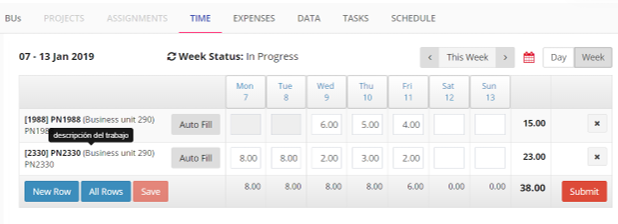
- Team members should be advised to track hours and expenses with the mobile application.
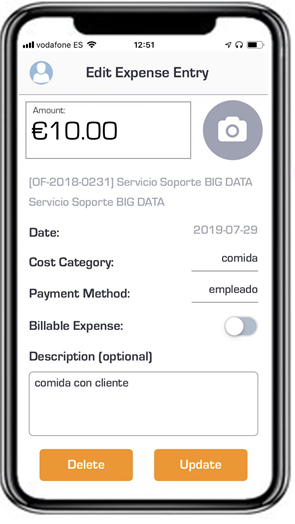
- Team Members can submit comments on the project to the PM. They can show their names or keep anonymous.
- Team Members can track their happiness index and other useful data to be used in agile retrospectives.
- Team Members can check feedback aimed to them.
- This is the right time to practice the feature to provide feedback to team members. The 5 stakeholders, the sales manager, the head of Process Management Department, the 5 PMOS, the 2 PMO, the PfM, the PgM and the PM can provide feedback to team members using their roles: stakeholder, requester, functional manager, sponsor, PM, PfM and PgM. Team Members can check their feedback via web or mobile application. People providing feedback can also use a text box to add comments for managers, which is hidden to team members.
- Managers using roles PM, PMO, PMOS, PfM, PgM and RM can check feedback to team members, including the part aimed to managers.
- Managers can approve or reject hours or expenses day by day, or week by week. Sometimes they need to see the whole data at a glance, for many team members in many projects for a given period. This can be done in capacity management and expenses management sections.

What has changed today?
At the end of the day, people collaborating on ACME projects can check they are able to perform the following functions:
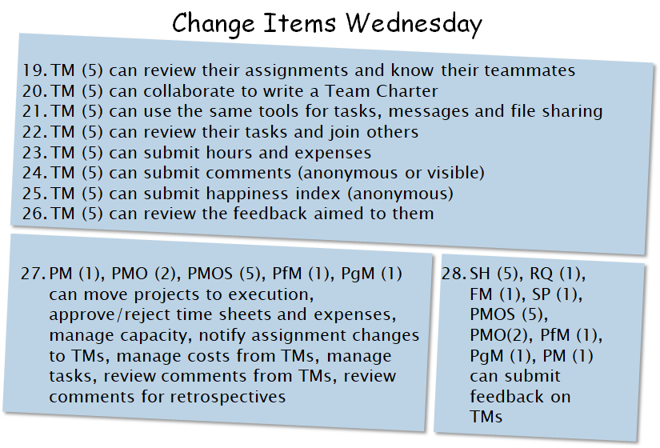
Thursday

Piloting is finished with governance and control modelling. Use the pilot project to produce 2 status reports. The last status report should state the up-to-date situation as of today, if possible.
- Qualitative project status report data is usually the most appreciated by top managers. In general terms, PM should explain how the project and each work package is doing as of status date using section Heath Check. Semaphoric green color means the project is progressing according to plan. Amber color means there are some issues. Use red color if managers should be worried by this project because there are serious issues, the project is off track, etc. To complete health check for the project or for any work package, write the relevant information about main risk, issues, assumptions, and external dependencies. Users with roles stakeholder, requester, functional manager can see this information in the web in a dashboard:

- PM (or any other manager) can enter more status report details regarding scope, schedule, cost, and funding control.
- PM (or any other manager) can update the risk register, the issue log and the assumption log.
- PM (or any other manager) can read comments coming from team members, stakeholders, sponsor, and requester. Managers can write logbook items as comments.
- PM (or any other manager) can process changes requested by stakeholders, requester, and sponsor. PM can set changes as accepted or rejected, as decided by the change control board.
- PM (or any other manager) can check the feedback aimed to the project by stakeholders, sponsor, and requester.
- PM (or any other manager) and also the requester can add lessons learned while the project is open.
- PM (or any other manager) and also the functional managers and the requester can review the closure report while the project is open.
Some closure report items are updated automatically: The Project Summary shows the information on the client, scope statement, approved changes, dates, and global milestones. The Project Ledger shows the information on the financial project margin and also information on each work package—including the project summary task—with the performance data on scope, schedule, and cost. The Project Logbook shows issues and comments in chronological order. The Project Feedback shows feedbacks by stakeholders, requesters, and Sponsor, in chronological order.
What has changed today?
At the end of the day, people collaborating on ACME projects can check they are able to perform the following functions:
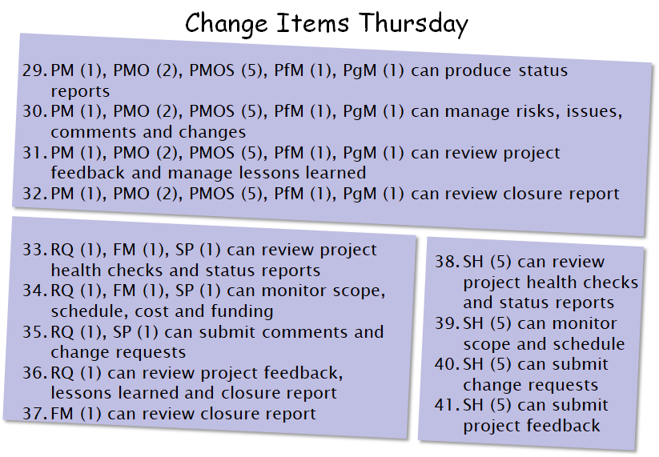
Friday

The last step in PMO activation project consists of expanding processes, tools, and techniques from the pilot project to the rest of the projects in the organization.
The 5 PM Assistants involved in the pilot project can now start engaging the others 14 PM. For now, it is enough if each project is managed at the project summary level. No need to break down into work packages or go down deeper baseline details. Change management would be more effective if first things are easy for everyone. We can always manage projects deeper later on, if needed.
Change management goals for each project, right now, are these:
- Assign all Team Members to their projects.
- Make each project show at least one qualitative status report as of today, with an updated semaphoric color.
- Register all Stakeholders (95) and make each PM have them as users inside the stakeholder register. Let PMs decide if they use email invitations, selection or private codes.
Last, but not least, we need to collect all pending topics and elaborate a PMO roadmap for the short, medium, and long term. Facilitate the brainstorming sessions with the following lists with data objects and uses cases.
The following table summarize the main data objects at PMPeople:
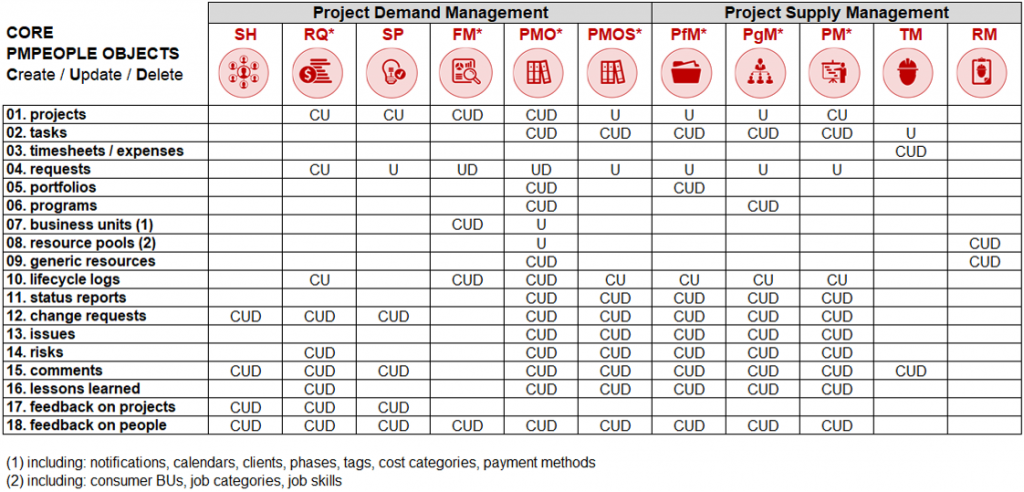
The following list shows the use cases at PMPeople related to people management:

The following list shows the use cases at PMPeople related to process management:

The following list shows the use cases at PMPeople related to the business environment:
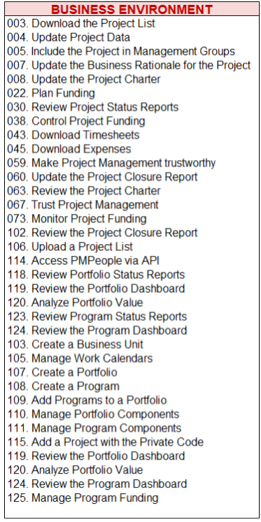
Finally, remember PMO activation project success depends greatly on the top management engagement in project governance, precisely they should be involved on the project review meetings. Otherwise, we can lose the achieved maturity level. There is an interesting psychological effect here. At PMPeople we like to talk about the “panopticon” effect on project management:

- Change is more effective when PMs feel that, at any time, the CEO, for example, from his mobile phone, can check how their projects are doing.
- PMs are motivated to update follow-up information continuously, as new facts are coming.
- Good practice of monitoring and taking corrective actions is encouraged at each project, individually.
- In the long run, more and more projects deliver business value, on time, on budget, meeting the management goals in a generalized way.
What has changed today?
At the end of the day, people collaborating on ACME projects can check they are able to perform the following functions:
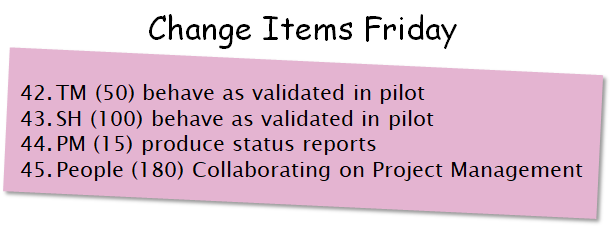
Watch the video (Spanish) recording the workshop webinar performed on April 26th:
PMPeople is the tool for the project economy. It is aimed to unify professional project management by these differential points:
- Designed by and for professional project managers, following professional project management standards.
- Online productivity –less meetings, less documents, less workflows– through distributed collaboration among 12 specialized roles: Organization Owner, 6 roles on demand management and 5 roles on supply management.
- Freemium product –unlimited time, unlimited users, only managers have to pay– usable via web and mobile application.
Start using PMPeople for free, for unlimited time and for any number of users. In premium organizations, only managers have to pay. Several roles –stakeholders, team members, sponsors and resource managers– are always free. You can increase or decrease your premium seats according to the organization actual needs. Premium organizations have access to our interactive support through Slack. Our servers are located in EU. This software can also be hosted on customer premises.
Jose Barato
Related posts
Categories
- Business (16)
- Demand Management Roles (14)
- Frequently Asked Questions (7)
- Guide (26)
- People (23)
- Assignments (2)
- Feedback (2)
- Project Team (3)
- Tracking Time And Expenses (2)
- Process (9)
- Closing (2)
- Executing And Controlling (2)
- Planning (1)
- Project Management (67)
- Management Frameworks (18)
- Organization Owner (OO) (3)
- Project Economy (54)
- Tools (19)
- Supply Management Roles (5)
- Training (6)
- Uncategorized (1)



